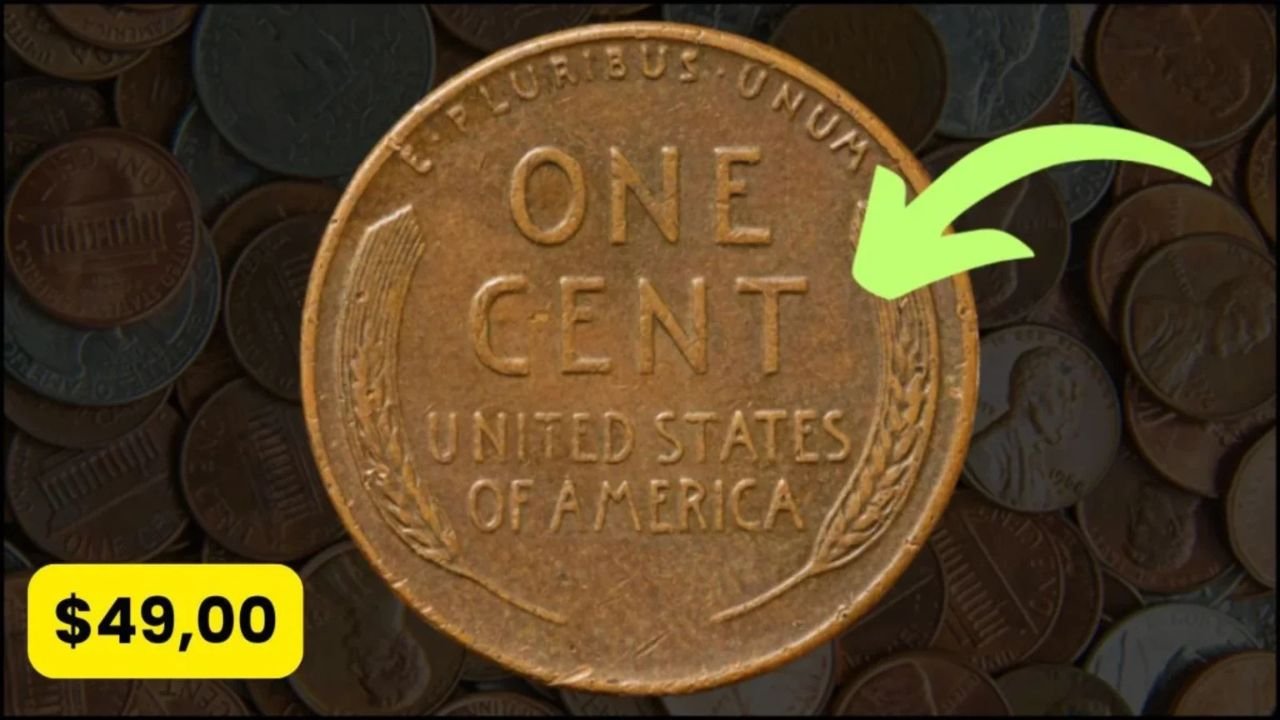The Lincoln Wheat Penny, a small but iconic piece of American history, has captured the attention of collectors and everyday people alike. Known for its simple design and historical significance, some of these pennies are valued at thousands of dollars, with some reportedly worth up to $4,900. But are these valuable coins still floating around in circulation? In this article, we’ll explore the Lincoln Wheat Penny, its value, and whether you might still find one in your pocket change.
What Is the Lincoln Wheat Penny?
The Lincoln Wheat Penny, often called the “Wheat Penny,” is a one-cent coin produced by the United States Mint from 1909 to 1958. Designed by Victor David Brenner, it features a portrait of President Abraham Lincoln on the front (obverse) and two wheat stalks on the back (reverse), giving it the “wheat” nickname. This coin was the first to feature a U.S. president and remains a favorite among coin collectors.
Why Is It Special?
The Wheat Penny is special because of its historical value and rarity. Certain years and mint marks (small letters indicating where the coin was made) are extremely rare, making them worth far more than one cent. For example, some Wheat Pennies from specific years, like 1909 or 1943, can fetch high prices due to their scarcity or unique features.
Why Are Some Wheat Pennies Worth $4,900?
The value of a Lincoln Wheat Penny depends on several factors, including its condition, rarity, and historical significance. Some pennies are worth thousands because of errors during production or limited minting. For instance, a 1943 Wheat Penny made of bronze (instead of the usual steel due to wartime shortages) is incredibly rare and can be valued at $4,900 or more at auctions.
Key Factors That Affect Value
- Condition: Coins in excellent condition, with clear details and minimal wear, are worth more.
- Rarity: Pennies from certain years or with specific mint marks are harder to find, increasing their value.
- Minting Errors: Mistakes during production, like a double-stamped design or wrong metal, make coins unique and valuable.
- Historical Context: Coins from significant years, like during World War II, often carry extra value.
Examples of High-Value Wheat Pennies
Here are a few examples of Wheat Pennies that can be worth significant amounts:
- 1909-S VDB: This penny, with the designer’s initials (VDB) and the San Francisco mint mark (S), is rare and can sell for thousands.
- 1943 Bronze Penny: Most 1943 pennies were made of steel, but a few bronze ones were minted by mistake, making them extremely valuable.
- 1914-D: A penny from the Denver mint in 1914 is scarce and highly sought after by collectors.
| Penny Type | Year | Mint Mark | Estimated Value | Reason for Value |
|---|---|---|---|---|
| 1909-S VDB | 1909 | S | $1,000 – $4,900+ | Rare, designer’s initials |
| 1943 Bronze | 1943 | None/S/D | $4,900 – $100,000+ | Minting error (bronze instead of steel) |
| 1914-D | 1914 | D | $200 – $3,000+ | Low mintage, high demand |
Are Valuable Wheat Pennies Still in Circulation?
The big question is whether these high-value Wheat Pennies are still out there in everyday pocket change. The short answer is: it’s possible but unlikely. Most Wheat Pennies, especially the rare ones, have been collected over the years by enthusiasts or dealers. However, because these coins were once widely used, there’s a slim chance you could still find one in circulation.
Where Might You Find Them?
- Change Jars: People often toss coins into jars without checking them. A Wheat Penny could be hiding among them.
- Old Collections: Family heirlooms or forgotten coin stashes might contain valuable pennies.
- Coin Rolls: Some collectors search through rolls of pennies from banks, hoping to find a rare gem.
- Flea Markets or Estate Sales: Old coins sometimes show up at sales where people don’t realize their value.
How to Spot a Valuable Wheat Penny
To determine if a Wheat Penny is valuable, check these details:
- Year: Look for key years like 1909, 1914, 1931, or 1943.
- Mint Mark: A small letter (S for San Francisco, D for Denver, or no letter for Philadelphia) is found below the year.
- Condition: Coins that look almost new, with sharp details, are worth more.
- Material: For 1943 pennies, check if it’s bronze (non-magnetic) rather than steel (magnetic).
If you suspect you have a valuable penny, take it to a professional coin dealer or appraiser for evaluation.
Tips for Starting Your Coin Hunt
If you’re excited about finding a valuable Wheat Penny, here are some beginner-friendly tips:
1. Check Your Change
Always inspect the coins in your wallet or change jar. Wheat Pennies are easy to spot because of the wheat stalks on the back.
2. Buy Coin Rolls
Purchase rolls of pennies from a bank and search through them. This is called “coin roll hunting” and is popular among collectors.
3. Learn About Grading
Coin condition is graded on a scale from Poor (P-1) to Perfect Mint State (MS-70). Learning to grade coins can help you identify valuable ones.
4. Join a Coin Community
Online forums, local coin clubs, or social media groups can provide tips and help you learn more about Wheat Pennies.
Common Terms Made Simple
Here’s a table explaining some coin-collecting terms in easy words:
| Term | Simple Meaning |
|---|---|
| Mint Mark | A small letter showing where the coin was made |
| Obverse | The front side of a coin (usually with a face) |
| Reverse | The back side of a coin (wheat stalks for Wheat Pennies) |
| Mintage | The number of coins made in a specific year or place |
| Grading | A system to rate a coin’s condition (worn to perfect) |
Why Collectors Love Wheat Pennies
Beyond their potential value, Wheat Pennies hold a special place in American culture. They were minted during significant historical events, like the Great Depression and World War II. Holding one feels like holding a piece of history. Their simple yet elegant design also appeals to collectors who appreciate the artistry of early 20th-century coins.
Conclusion
The Lincoln Wheat Penny, with its rich history and potential value, continues to fascinate collectors and casual coin hunters alike. While finding a penny worth $4,900 in circulation is rare, it’s not impossible. By checking your change, learning about key years and mint marks, and exploring coin-collecting communities, you might uncover a hidden treasure. Whether you’re in it for the history or the hunt for a valuable coin, the Wheat Penny offers a fun and rewarding journey. So, next time you get a penny in change, take a closer look—you never know what you might find!





3 thoughts on “The Lincoln Wheat Penny Valued at $49,00, Still in Circulation”